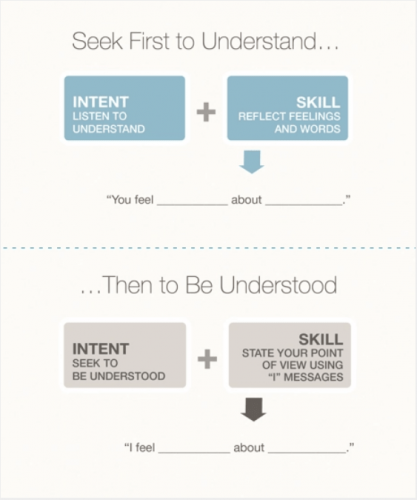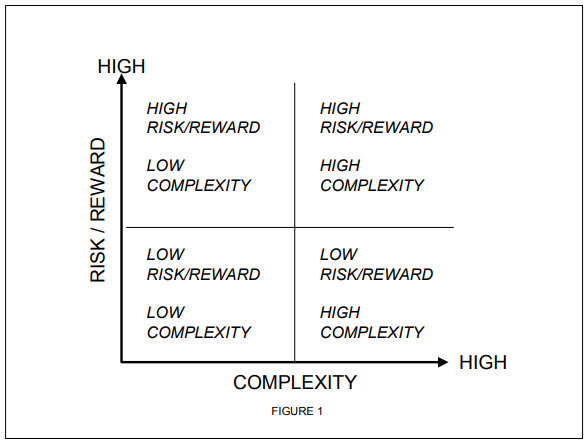
The Ultimate Guide to State Bar Associations for Firms
03/27/2019 By Bill4Time Staff

They’re not just about discipline. State Bar associations administer exams and regulate CLE credits. They handle attorney discipline citing attorneys for ethical, compliance and other violations.
They do so much more.
Attorneys who misunderstand this point do a disservice to their career. That’s because bar associations, when used appropriately, become an attorney’s greatest benefactor.
State bar associations can work for or against you
We’ve all heard the stories.
A public reprimand of this attorney, disciplinary proceedings against that attorney. Bar associations, seem to have a stern reputation, the kind that more prone to delivering bad news.
What if they delivered new business?
What if your bar association worked for you rather than against you? What if your state and local bar associations became your greatest ally? The kind of ally that boosts your career, attract new prospects and convert new clients? What if your bar association helped you to become an influencer in your own right?
The kind of influencer that attracts bigger fees and sizable contracts?
It’s definitely possible.
But is it something you can accomplish for yourself and your firm?
Absolutely.
If… you know where to start.
Seek first to understand, then be understood
Remember the saying from Franklin Covey? When you’re working with bar associations this is the basic template for success.

This tired quote?!
This is the key to extracting value from your state and local bar associations? I get it, this sounds ridiculous. It actually isn’t, here’s why. Most attorneys are only focused on extracting value. A vanishingly small number of attorneys are focused on contributing value.
Here’s why that’s important.
Most people are focused on being understood. They want those around them to listen to their story, to empathize with their situation or circumstance. They want others to provide them with the help and support they need. When it comes to helping their bar association though, they’re not at all interested.
It’s an unwillingness to understand.
This unwillingness to understand exposes their giving profile. Takers seek to extract, they rarely contribute. Matchers scratch your back if you’ll scratch theirs. Givers, on the other hand, give without thought or expectation of return. As it turns out, givers are also commonly focused on understanding and serving the needs of those around them.
What does this have to do with your state bar association?
Just this.
What you get out is what you put in.
In a previous post, I mentioned Peter Thiel’s value formula. It’s worth repeating so I’ll briefly recap that formula here.
- Create X dollars of value for your state bar association
- Capture Y percent of X.
This formula is a distillation of the axiom above. If you’re longtime reader you remember. This succinct equation describes the way the world works. This formula applies to relationships, groups, businesses and yes, even bar associations.
Here’s how you use it.
Step #1: Ask yourself “what’s in it for me?”
It’s a quick and easy win.
Thirty-two states require membership in the state bar to practice law. But requirement doesn’t equal engagement. This is why it’s common for many attorneys to treat their membership (mandatory or not) as an afterthought.
You’ll want to be selfish.
Ask yourself the question “what’s in it for me?” Go through your bar association’s website and/or marketing materials. Read their pamphlets, brochures and data sheets outlining the benefits available to you as a member. List everything, whether you currently use it or not.
Here’s an example.
Explicit benefits typically include:
- Education in the form of a law library, educational resources, CLE presentations, etc. education typically comes in the form of books, video, audio, courses and other trainings.
- Many bar associations provide members with licensed copies of legal software (e.g. legal research, document management or legal case management) at reduced/no cost.
- Hotel, lifestyle, office, technology and travel discounts are common. Other bar associations also provide discounts on other much-needed products and services. These provide additional financial incentives attorneys/firms can use to offset their expenses.
- Payment processing. Access to online payment processing via reputable third-party providers.
- Meeting facilities. A large room for presentations, meeting rooms for depositions. It’s common for bar associations to provide attorneys with a meeting space they can reserve for bar or individual related purposes.
- Your bar association may provide you with options and additional savings on your insurance plans including health, dental, life, professional liability, accidental death, property and casualty, crime, auto and home insurance.
- Prescription drug benefits. Some bar associations may negotiate special pricing on prescription drugs via an established third-party provider
- Practice management software. Many state bar members are eligible for steep discounts on web-based, practice management software.
- Marketing services. Sophisticated associations may also provide discounted advertising, access to mailing lists, web development and production services.
- Assistance programs. Many bar associations provide attorneys with free and confidential help to deal with personal issues like burnout, stress, marriage and addiction problems, career concerns and more.
Like I said these benefits are explicit. What about the implicit benefits bar associations offer?
Implicit benefits typically include:
- Client referrals via the lawyer referral information service and informal one-to-one and one-to-many direct tangential attorney/client relationships.
- Business development and marketing support in the form of additional marketing opportunities. Most attorneys choose the expensive route of going it alone. Working with your bar association gives you access to a massive captive audience. Sophisticated and motivated clients who are part of your bar association’s social media and email lists.
- Authority building. Creating and publishing content on behalf of your bar association establishes you, over time, as an influencer and authority figure in your own right.
- Advanced networking. Used properly, your bar association provides you with access to other skilled influencers, thought leaders and legal professionals.
- Intelligence in the form of unknown unknowns comes as a result of the networks and relationships you build via your membership and engagement with your bar association. The kind of valuable information every firm wants but very few receive.
- Used appropriately, your bar association will enable you to attract attention from employers who aren’t hiring and firms with no open positions or opportunities.
- Your bar association is more than willing to provide you with a steady supply of clients and revenue. You just need to do the right things for them in return.
As the name implies, these implicit benefits aren’t advertised.
Step #2: Next, outline “what’s in it for them?”
Your bar association needs help.
Bar associations are under a tremendous amount of pressure to provide value to their members (states with required membership less so). What specifically does this mean for your law firm?
Bar associations need content.
Creating content for your bar association provides you with the implicit benefits mentioned above. Depending on your bar association, it may also give you more leverage to negotiate more favorable terms on any explicit benefits offered.
Here’s what that looks like.
Here’s where this gets interesting.
The attorney speaking is Emil Ovbiagele of OVB Law & Consulting S.C. he’s a young attorney, only five years in, but is already providing the bar with the client-friendly content they need. When he provides the bar with the content they need his firm benefits.
Can you do more?
It all depends on your effort, doesn’t it? Here’s how you can provide your bar association with value.
- Take a marketing coordinator, gatekeeper or decision maker to lunch and ask questions. Look for areas and opportunities (e.g. frustration/problem spots) where you can add value (e.g. content, connections, knowledge, expertise, time or resources).
- Pitch decision makers. Outline the problem they face then present them with a low risk or no/low cost solution.
- Then go above and beyond, creating a solution that over delivers on your promises. If you’re creating content for the bar, provide them with a variety of formats (e.g. ebooks, blog posts, videos, speeches, etc.).
- Capture a percentage of the value you’ve provided. If you’ve created content for the bar, lead referring attorneys or prospective clients back to your site with a valuable download. Look for an appropriate opportunity to capture a percentage of the value you’ve created.
- Once you’ve provided a valuable solution, immediately work to solve yet another problem. Work to consistently over deliver, exceeding your bar association’s expectations. If your idea is rejected, pitch another (better) idea. If your idea is accepted, pitch again after you’ve delivered results. Keep pitching until you’re explicitly told to stop.
- Parlay your work with the state bar into bigger publications and venues, increasing their status, prestige and revenue as they go. Here’s an example of a simple guest post Bruce Stachenfeld wrote for Above the Law. Remember, these publications have a big problem – they’re starving for content.
Step #3: Go all in
If you decide to move forward go all in. Half measures take a considerable toll in the form of missed opportunities and lost revenue. Don’t let that happen to you.
Remember the axiom:
What you get out is what you put in.
You can’t afford to put in more time. If you’re like most attorneys, you’re struggling to perform as it is. Research shows most attorneys lose 6 to 8 hours of work to nonbillable work. It’s common for attorneys to work nights and weekends just to stay current.
Now I’m suggesting that you “go all in?” How exactly do you make that happen? Here are four simple strategies most attorneys aren’t using.
- Tiny habits
- Virtual assistants
- Dead time
- Automation
1. Tiny habits: Make high performance automatic
Motivation is garbage. This isn’t just me saying it, it’s Mel Robbins, a former criminal defense attorney and CNN legal analyst turned motivational speaker.
Take a look.
Tiny Habits circumvents motivation entirely.
BJ Fogg Ph.D., Director of the Behavior Design Lab at Stanford University created Tiny Habits. He created it after discovering that only three things will change behavior in the long term.
Option A. Have an epiphany
Option B. Change your environment (what surrounds you)
Option C. Take baby steps
Tiny Habits uses options B and C to create real lasting change. A tiny habit is the smallest component of a habit you’d like to create. If you’d like to floss your teeth after every meal you don’t set that as a goal.
You just floss one tooth.
That’s it. If you do that, you’re automatically a winner. And you know what he found? Doing that means most people do more.
Instead of pitching your bar association you just add an email to your message in the “To:” field. Instead of coming up with 16 different ways to add value, you come up with one. Then the next one.
See what I mean?
2. Virtual assistants
In The Art of Delegating Legal Work, Norman Clark shares what he calls the delegation matrix. Here, let me show you what that looks like.

Pretty self explanatory, right?
Note: Read this post for a full breakdown of the details shared in this section.
This matrix shows you what to delegate, when to delegate it and why. Use this matrix to focus on the to-do items that matter most.
Next, you’ll need to build a virtual bench.
Most attorneys attempt to build a virtual bench when they need it. This primes firms for failure. Think about that for a second. If you have a pressing deadline or a matter that needs to be taken care of quickly, you’re desperate.
That desperation clouds your judgment.
Instead of looking for the best legal professional desperation compels you to look for an adequate legal professional.
You need A players.
Here’s how you go about finding those A players.
- You place an ad. You outline the specifics of what you’re looking for in your job description. Share requirements, expectations and qualifications needed. You use a tool like JobScore or Recruiterbox to share your ad across multiple platforms instantly.
- Filter candidates with applicant tracking systems and software. There are free options like Qandidate and paid options like Recruiterbox. You’re looking to filter out irrelevant candidates, spammers and You want to minimize the amount of time you spend with non-potentials.
- Create a list of potentials.These are candidates you feel may be a good fit as a virtual assistant for your firm. You can use additional tools like HarQen to automate and semi-automate video and phone interviews.
- You spend a bit By now, you should have a short list of potentials. Let these candidates know you’re willing to spend 10 to 30 percent more on the best professional.
- Ask potentials to arrange an interview. This is a phone interview with the previous client, manager or partner. It should be with someone they’ve worked with, at the organizations they’ve listed on their resume. A players will jump at the chance to show they’re amazing, C players will slink away.
Use this to build your list of professionals.
Do your best to outsource or delegate as much of your non-billable work as possible.
3. Dead time: Become a rainmaker in your spare time
Here’s a strategy elite attorneys use to get an enormous amount of work done in a very short period of time.
Dead time.
Dead time is occupied time. The time where you’re doing something tedious, repetitive or mindless (mostly). Eating lunch at your desk, your daily commute to and from work, working out, etc. Here’s how you use dead time to become a rainmaker.
- Get a topic from your state bar (see steps 1 and 2 in the previous list).
- Write one question on that topic on your note cards (use as many cards as you need).
- Take one note card and a voice recorder with you in the car on your way to work.
- Answer the questions thoroughly, in great detail. Treat each question like a chapter in a book.
- When you’re done, get this content transcribed and edited via a freelance provider.
- Compile it into a blog post, video, speech or book.
- Send the finished product to your state bar for review.
This is a simple strategy you can use to add value to your bar association, fellow attorneys and yourself. But it’s also an untapped resource few attorneys are using.
4. Automation: Save 6 to 8 hours per day
With the right approach and a small amount of automation, you can win a significant amount of your productive time, back. It requires some upfront work but it’s all front loaded. Once you’ve set things up this system just works. Here are some things you can automate.
- Scheduling meetings and appointments
- Tasks and deadlines
- Automated time tracking to simplify billing and invoicing
- Client intake and follow up
- Automate document assembly
- Bookkeeping
- Client support
- Review management
You shouldn’t be spending your time on these. If you’re a grinder, minder or finder you should focus your attention on the details that matter most.
Here’s a detailed breakdown, showing you how to automate these details in your firm/for yourself.
Can you see it?
The secret ingredient needed to maximize the benefits you receive from your bar association membership?
It’s you.
State Bar associations work for or against you
They’re not just about rules and regulations.
The state bar is a wonderful opportunity in disguise. It’s a chance to give and receive value. Want overwhelming value from your membership (mandatory or not)?
What you get out is what you put in.
Attorneys who understand this give their legal career a huge shot of forward momentum. That’s because state bar associations, when used appropriately, become your greatest benefactor.
You can do this.
Use giving and receiving to maximize the benefits your state bar association receives. Serve your peers, add value and you’ll convert your bar association into your biggest ally, no reprimand required.




